
|
||
|
Issue 64 |
|
5 December 2011 |
|
 Madrid, Spain ©2005 J.Crawford AnnouncementsNew, Shorter FormatCarfree Times is shrinking. Most stories have been reduced to links, but with expanded descriptions to help you judge whether or not the original article is worth reading. This is freeing up a lot of my time to concentrate on video production, which I am hoping will have a larger impact than Carfree Times has had. It's time now to get the carfree concept before millions of people, not thousands.Carfree Times has done pretty well during its 15-year existence, but I am now convinced that it's time to turn to social media and video to start effecting change. From here on, longer articles will either be of special significance or written especially for Carfree Times. In a sense, Carfree Times is itself trending towards social media. Please let me know how this works for you. VideoI have spent most of the fall video editing. The latest and most ambitious release is "Occupy All Streets: The Role of Carfree Cities in a More Sustainable World." It's embedded below, and you can watch it in HD if your connection is fast enough: |
|
|
|
The following additional films are on line at Vimeo.com:
Dutch Noise (Amsterdam) Shorter versions of some films are available on YouTube. More will be coming along over the winter. I am trying to promote these videos starting now. If you can, please watch some of these films and "Like" them. Posting to Twitter and Facebook would also help. I will be doing this myself, of course. I think this is a very fertile time to get the carfree message before the public, and I can use all the help I can get. "Occupy All Streets" has been released under a Creative Commons Non-Commercial Attribution license, so you're free to do anything you like as long as you acknowledge the source. I would have simply put it in the public domain, but I used other Creative Commons-licensed material that requires the same terms and conditions. These films were all shot with my Sony NEX VG10, which gives remarkable video quality in a package small and light enough for me to travel with. It's been a huge learning experience, and quite a lot of fun. I plan to return to Europe next summer to shoot more, probably in Italy this time.
 Madrid, Spain ©2005 J.Crawford Portfolio ReleasedI am releasing a portfolio of ten black-and-white photographs from Portugal and Spain dating from 2005 and 2006. Small versions are shown in this issue of Carfree Times. This is an open edition, and I will print as many as there is demand for. The price is $200 for the ten prints plus cover sheet, all at 11x17" size.The Artist's Statement describes both the artistic and technical aspects of the portfolio and is available as a PDF. Shipping outside the USA will be extra. Please direct inquiries to the usual e-mail. The BooksCarfree Cities and Carfree Design Manual are widely available in Europe and North America.
 Beja, Portugal ©2006 J.Crawford
World Carfree NetworkCarfree.com actively supports World Carfree Network (WCN). The main news from the network follows. WCN could use your help if you have time available.World Carfree NewsWorld Carfree News is now available in Czech, English, French, German, Italian, Portuguese, and Spanish. It's a great way to keep abreast of important developments in the carfree cities network.CarbustersCarbusters has moved on line. The content is unchanged, but it is now easily accessible by internet, and it's free. |
|
 Coimbra, Portugal ©2005 J.Crawford News BitsBiofuels: Another Dead EndA hundred top scientists and economists have called on the EC to account for indirect land use changes (ILUC) when setting EU biofuels policy. In a letter, sent by EurActiv, they argue that assigning biofuels a zero or "carbon neutral" emissions value - as the EU has done - is not supported by science.Flawed accounting conventions may result in the EU's target for renewable transport energy yielding no carbon savings in the real world. "It could end up as merely an exercise on paper that promotes widespread deforestation and higher food prices." Since 2008, EU member states have been obligated to raise the share of biofuels to 10% by 2020. However, recent reports by the European Environment Agency and four other EU agencies have questioned whether meeting the EU's target would cut CO2 emissions at all. This is because the method chosen double-counts the carbon absorbed by the biofuels during their growth, and omits to count their exhaust pipe CO2 emissions. The scientists cited research over several years, some commissioned by the EC itself, that shows that displacement of human activity by converting forests and grasslands to biofuels production can result in "substantial" CO2 emissions. The studies of land use change show that the emissions related to expanded biofuels production are significant. Second-generation biofuels made from 'woody' material such as tree bark and leaves do not compete with food production, and so have fewer ILUC impacts. While more effective at reducing greenhouse gas emissions, they are more costly. Production is as yet essentially negligible. All of this is a matter of vigorous political and scientific debate, of course.
"European biofuels target condemned by leading US scientists"
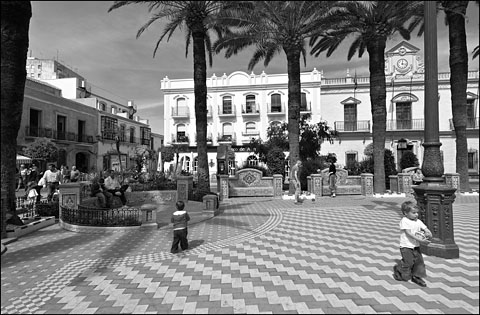 Ayamonte, Spain ©2005 J.Crawford Traffic Pollution Damages HealthScientists are investigating the connection between air pollution and an array of health effects. In the Los Angeles region, recent research has found connections between people living near freeways and asthma, reduced lung function, cardiovascular disease, autism, and other health effects.The area stretching from Long Beach to East Los Angeles has been dubbed the "diesel death zone." Emissions from trucks, ships, trains, and other diesel-powered sources cloak the region, and it is suspected that many health problems are environmentally related. Linda Birnbaum, director of the National Institute of Environmental Health Sciences, said, "Evidence is showing that traffic pollution has a huge impact on public health. Living near major roads is hazardous to your health. Period." She recently observed the underbelly of a region that faces some of the worst air quality problems in the country. She stopped first at an overlook above the giant ports at Los Angeles and Long Beach. Together they form the sixth busiest container port in the world and the busiest in the United States. About 500 trucks an hour rumble down the Terminal Island Freeway. The carbon and ultra-fine particulate levels are extremely high due to the quadruple whammy of the ports, refineries, diesel trains, and freeways. Research has long shown that such particles lodge in lungs, where they trigger asthma attacks, heart attacks, and other respiratory and cardiovascular problems. Air quality, particularly smog, has actually improved in the region following decades of regulation forcing the clean-up of cars, trucks, industry, and consumer products. Emissions have declined around the ports as new technologies have been put in place, including a clean-truck program that has replaced many old diesel trucks with newer models with particle filters. Yet dangerous levels of pollution persist throughout the harbor area. Ozone, which causes smog, is still the worst in the country. Fine particles are also among the worst. In some schools, nearly a quarter of the students have asthma. Children sometimes have to stay inside when teachers smell exhaust or chemicals in the air. Of course, some emissions are odorless, including volatile organic compounds such as trichloroethylene and benzene, both known carcinogens. Every area has its own problems stemming from traffic, coal-fired power plants, chemical factories, contaminated water, and hazardous waste. In Los Angeles County, about half of the residents, some 7 million people, live within a mile of a freeway, quite a few of them much closer. Lung function is about 10% lower in children growing up near freeways. Children born to mothers living within 309m of a freeway appear to be twice as likely to have autism. "You’ve got to put a dollar figure on how much money you’d save by not having kids with asthma and people with heart attacks," Birnbaum said. "You have to turn it around and say how much money is saved by doing it the right way."
"U.S. Neighborhoods Struggle with Health Threats from Traffic Pollution
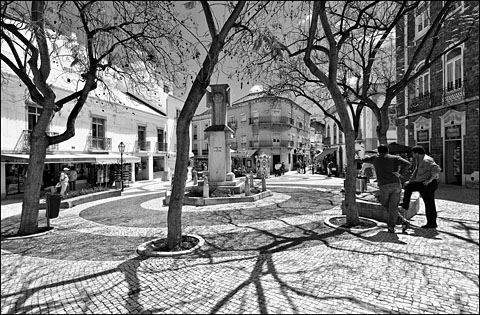 Lagos, Portugal ©2005 J.Crawford More Bad News on the ClimateThe global output of CO2 has jumped by a record amount according to the US Department of Energy. This shows just how feeble the world's efforts at slowing anthropogenic climate change have proven. The figures for 2010 show levels of greenhouse gases higher than the even worst-case scenario outlined just four years ago.The world pumped an additional 512 megatonnes of carbon into the atmosphere in 2010 compared to 2009, a 6% increase. It was an unprecedented increase, despite the global recession. Extra emissions from China and the USA account for more than half the increase. India and China are huge users of coal. Coal is the biggest carbon source worldwide, and emissions from coal jumped nearly 8% in 2010. The IPCC issued its last major report on climate change in 2007. It computed various scenarios for CO2 emissions and forecast the rate of warming on the basis of the rate of emissions. The latest figures put global emissions at a higher level than the worst-case scenario. That scenario forecast a global temperatures rise between 2.4 and 6.4°C by the end of the century. Global warming sceptics have called the IPCC's climate change panel alarmist, but scientists have actually found their predictions too conservative. The IPCC's worst-case scenario was roughly in the middle of the range that MIT predicted. "Really dismaying," said Granger Morgan, head of the engineering and public policy department at Carnegie Mellon University, of the new figures. "We are building up a horrible legacy for our children and grandchildren."
"Greenhouse Gases Rise by Record Amount: Levels of greenhouse gases are higher than
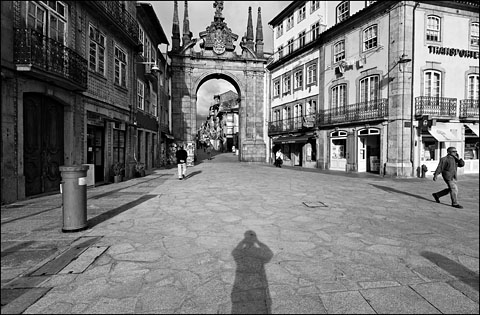 Braga, Portugal ©2005 J.Crawford Tiny FEVE Is First European Operator of HydrailIn July of this year, I rode Spanish FEVE's excellent narrow-gauge service from Oviedo to Ferrol. I was impressed by the entire operation, and the scenery alone is worth the trip. One of the reasons they can operate such a tight timetable is that all of the stations have high-level platforms. (By comparison, NJ Transit's Hoboken station, the third-busiest in the New York region, still has only low-level platforms.)Little did I know that this modest regional railroad was right on the point of becoming the first railroad in Europe to test a hydrogen-powered train. (Yes, this still begs the question of where the hydrogen will come from.) The first run was from Oviedo to Pavia and was operated by a modified older vehicle capable of carrying only 20-30 passengers at a speed of just 15-20 km/hr. Its main components are 4 motors, 2 fuel cells of 12 kW power each, banks of lithium-ion batteries, supercapacitors, and 12 bottles of pressurized hydrogen. The hydrogen fuel cells provide all of the motive power, but demand peaks and regenerated power are balanced by the batteries and capacitors, so the fuel cell output of just 24 kW is sufficient. The fuel cells are able to operate continuously at full power, which is the most advantageous circumstance. Admittedly, the speeds achieved are quite slow, but as a test bed for fuel cells and hybrid operation, the train should be sufficient to prove the concept. The huge advantage that this system offers is the ability to provide clean-running (i.e., non-diesel) service in sparsely-settled areas that cannot support the cost of electrification. In theory, the hydrogen can be produced using renewable sources of energy, although about one-third of the energy is lost electrolyzing water, and then the hydrogen still has to be compressed for storage, which also uses quite a lot of energy. (Other storage methods have been proposed but are not, so far as I know, in practical use at this time.) We urgently need rail motive power that provides the efficiency of electric propulsion (including the capture of braking energy) without the ugliness and expense of stringing an overhead power supply. We will be watching developments closely.
"Feve presenta el Tranvía de Hidrógeno que entrará en circulación en 2012 "
|
Hot New Links |
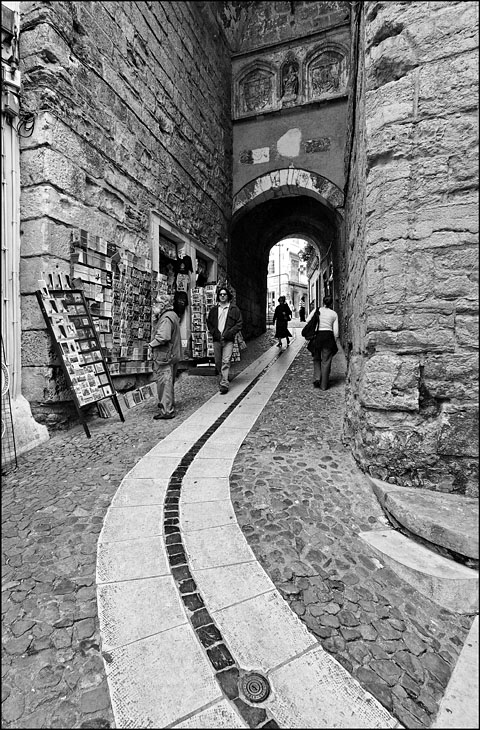
Coimbra, Portugal
©2005 J.Crawford
|
The links below will open in a new browser window:
"Wheelchairs in the Snow, Alas"
"How the Dutch got their cycling infrastructure"
"Tearing down urban freeways to make room for a new bicycle economy"
"PARK(ing) Day: Reclaiming Our Streets from Our Cars"
"Cargo Bike Capital - Rio de Janeiro"
"Opportunities Abound for Transporting Goods by Tram"
"How Tiny Solar Trucks Can Save American Cities"
"The Radical Technology of Christopher Alexander"
"Europe’s Vibrant New Low Car(bon) Communities" [PDF!]
"Model Design Manual for Living Streets"
"War On Cars? Don't Sweat Emissions or Congestion"
"Interactions with Aerosols Boost Warming Potential of Some Gases"
"Threat to Arctic Ecosystem as Ice Cover Reduced to 'Young, Thin' Floes"
"Ticking Greenhouse Gas Time Bomb: Melting Permafrost"
"World headed for irreversible climate change in five years, IEA warns"
"Climate change means more frequent droughts and floods"
About Carfree Times
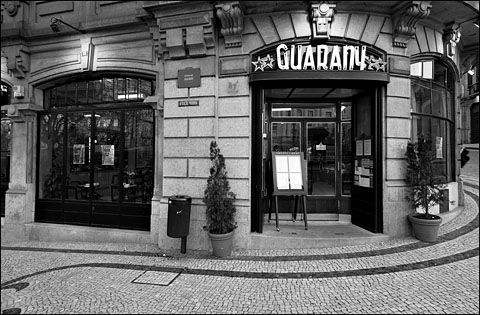 Porto, Portugal ©2005 J.Crawford
Next IssueThe next issue of Carfree Times is scheduled for early 2012.
Subscribe to Carfree TimesCarfree Times is published quarterly at Carfree.com. To receive e-mail notices of new issues, please visit the subscription page or send e-mail with the word "Subscribe" in the subject line. We do not share our mailing list.Write for Carfree TimesInterested in writing for Carfree Times? We welcome articles on a wide variety of subjects and offer an opportunity to publish letters to the editor and guest editorials. Drop us an e-mail.
 Valladolid, Spain ©2005 J.Crawford
Statement of OwnershipIn this day of corporate-influenced media, it is perhaps incumbent upon Carfree.com to declare its ownership and sources of support.Carfree.com is wholly owned by Joel Crawford, the legal name of author J.H. Crawford. Its operation is financed by J.H. Crawford, with the help of some generous donors between 2004 and 2008. It generates no revenues directly but does help support book and photograph sales. Carfree.com accepts review copies of books but makes no commitment to review them. J.H. Crawford receives no commissions from the sale of books mentioned on Carfree.com. The views expressed at Carfree.com are those of J.H. Crawford, except for articles, letters, and editorials that carry the names of other authors. The inclusion of these signed texts is at the sole discretion of J.H. Crawford, who does not necessarily agree with the views expressed. All other content, except quoted material, is written by J.H. Crawford. E-mail announcements of new issues of Carfree Times are mailed to approximately 850 subscribers. A rough estimate of first-year circulation for each new issue is 5000. All the issues ever published are still being read. Carfree.com as a whole will have served about 1.2 million pages and 95 GB of files in 2011. |
| Editor | J.H. Crawford |
| Send e-mail | |
| URL | http://www.carfree.com/
|
Back to Carfree.com
Carfree Times Home
Back to Carfree Times Issue 63
Forward to Carfree Times Issue 65
E-mail
carfree.com
Illustrations copyright ©2011 J.Crawford
Text, except for guest articles, placed in the public domain